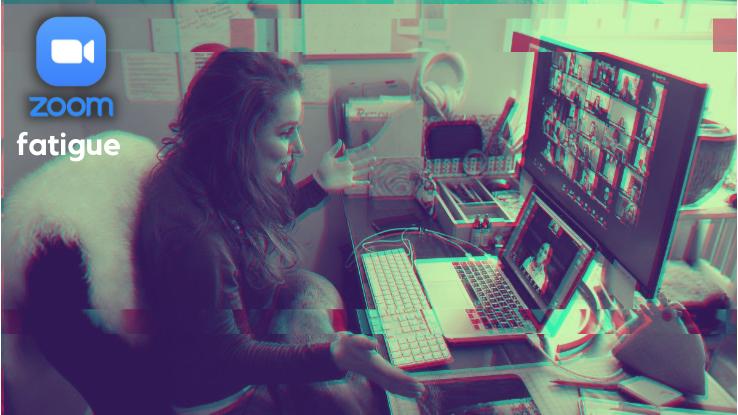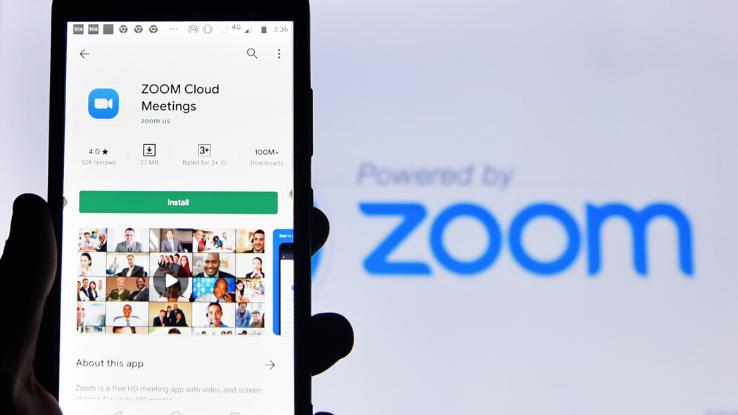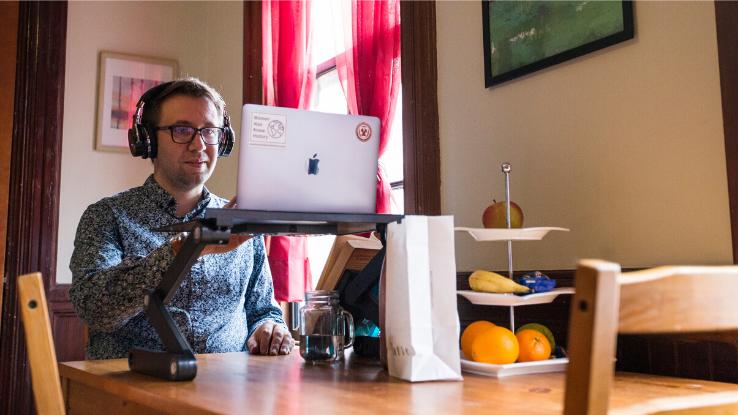How Do You Make The Camera Zoom On Panzoid

Remember that Skype ringtone that would chime delightfully through your laptop's speakers when you tried to get someone on the line? A decade ago, that video conversation service seemed destined to get the Google of its domain — so synonymous with video conferencing that it became a verb when you wanted to "skype" someone. Nonetheless, the video conferencing competition has go incredibly fierce.
While Skype seemed to accept a horse in both races — professional workplace conversation services and social video chatting — other services emerged, etching out specific niches. For example, FaceTime became the go-to social video chat service. It'due south more immediate, easy to employ, correct in the palm of your hand, and, all-time of all, designed to be quick — like a phone call.
Meanwhile, Zoom, which launched its software in 2013, aimed to get the platform for teleconferencing, telecommuting, and altitude learning. In the wake of increased shelter-in-place directives and work-from-home initiatives sparked by the COVID-19 pandemic, Zoom became a way to connect socially too.
If you, your friends, and your family are all using a platform for telecommuting, why non just use that aforementioned platform to nearly socialize too? But even earlier the COVID-19 pandemic hitting, Zoom'southward ease-of-use and reliability resulted in a $1 billion valuation in 2017. The "unicorn" company joined the NASDAQ-100 stock index on April 30th, 2020. Perhaps more than impressively, Zoom has become the stand-in, brand-name verb that'due south synonymous with video conferencing.
Why Is Video Chatting And then Draining?
While platforms like Zoom, which offers a free version of its communication service, have proven to be invaluable resource during the novel coronavirus pandemic, there are some downsides to using this type of technology. Of class, the upsides — being able to work and learn remotely and safely from habitation; hosting events, like happy hours, altogether parties, religious gatherings, and even weddings; and connecting with friends and family face-to-face — outweigh any negatives. Even so, it'due south becoming more than and more than credible that video chatting, even for just a few minutes a day nigh every solar day of the week, is exhausting.

Now more ever, we're all peckish connexion — uncomplicated human interaction and socialization. Information technology seems wrong to dread an upcoming Zoom conversation with buddies who live beyond the state, or thanks to the COVID-xix pandemic alive just across town, but after a long calendar week of telecommuting, lethargy sets in nonetheless. Dubbed "Zoom fatigue," the tiredness that accompanies the end of the day feels like both physical and emotional burnout — fifty-fifty if yous were simply attending regular work meetings throughout the day. So, what gives?
According to Canadian publication CBC, chatting almost can experience more tiring than an in-person catch-up. "Users can feel similar they're performing for the camera more than they would while meeting colleagues in person — peculiarly when software continuously displays to a user their own live image, adding an element of self-sensation." When you consider the Hollywood Squares feeling of it all — a.k.a. Zoom's "gallery way," which allows yous to see all the conversation'southward participants — it makes sense.
You never know when someone is looking at yous, and so looking away, doodling in a notebook, scratching your nose — none of it feels like proper etiquette. In-person, conversations take lulls, flows and ebbs that permit participants to focus their attention on whoever is speaking or on the less static environment around them. With Zoom, it'southward all nearly staring into the photographic camera, desperately trying to make middle contact with every set of pixelated eyes. For folks with social feet, trying to be heard or interject over a Zoom telephone call can experience fifty-fifty more daunting due to that looming, silent audience.
To make matters more trying, sometimes staying engaged takes so much energy that a Zoom call becomes two primary speakers going back and forth while everyone else listens on, microphones muted. We've all been there, nodding forth and wondering if anyone can tell we're nodding at all. Of course, there'southward more than to looking like an active listener via a video chat than eye contact and facing forward. Janine Hubbard, a psychologist at St. John's, told CBC in an interview about another factor that leads to fatigue. "We're doing exaggerated non-verbal cues, equally opposed to much more than naturalistic, relaxed ones that we would normally do."
We can't really read modest gestures or body language over a video chat. If someone is fidgeting nervously, that'southward less apparent. Y'all as well can't give the verbal and nonverbal cues you commonly would if you want to interject. Retrieve of information technology like interim on stage — where fifty-fifty the last row of the audience needs to meet your emotion — versus acting for a picture show, when you have all the shut-ups you demand and distance doesn't matter as much. Co-ordinate to the Wall Street Journal's findings, even that "millisecond filibuster" betwixt activity and reaction tin can impact video chatters.
Possibly i of the greatest challenges of Zoom is all that multitasking. In fact, y'all might non fifty-fifty perceive information technology as such, merely information technology'south clear that video conferencing is a balancing human activity. Andrew Franklin, an banana professor of cyberpsychology at Virginia'south Norfolk Land University, explained to National Geographic why the multitasking gene, or as psychologists call information technology, "continuous partial attention," plays such a huge function in Zoom fatigue. "We're engaged in numerous activities but never fully devoting ourselves to focus on anything in item," Franklin notes.

And then, how can nosotros combat this fatigue? First, it's important to limit the number of meetings — and their running time — on a daily basis. Go along that in heed when chatting socially with friends for happy hour or over the weekend. Simply considering someone is feeling too tuckered to video chat, that doesn't hateful they don't want to about hang.
Another piece of cake tactic? Try shifting your calls to sound-only. If you're on Zoom, agree to keep the video off unless visuals are absolutely necessary, or at to the lowest degree ensure your workplace (or friend group) is okay with peculiarly fatigued individuals opting out of the video portion once in a while. Of course, if none of these Zoom-related tips help acuminate your focus or reduce your fatigue, there's nothing wrong with picking upwardly the phone and calling your coworkers, friends, and family the old-fashioned manner on occasion.
The CDC regularly updates its safety guidelines for vaccinated and unvaccinated individuals. If yous wish to meet up with your loved ones in person, y'all're strongly encouraged to carefully read these guidelines. Virtual vacations are besides valid and viable ways to combat Zoom fatigue.
Source: https://www.ask.com/culture/ask-answers-what-is-zoom-fatigue?utm_content=params%3Ao%3D740004%26ad%3DdirN%26qo%3DserpIndex
Posted by: hancockmanote.blogspot.com

0 Response to "How Do You Make The Camera Zoom On Panzoid"
Post a Comment